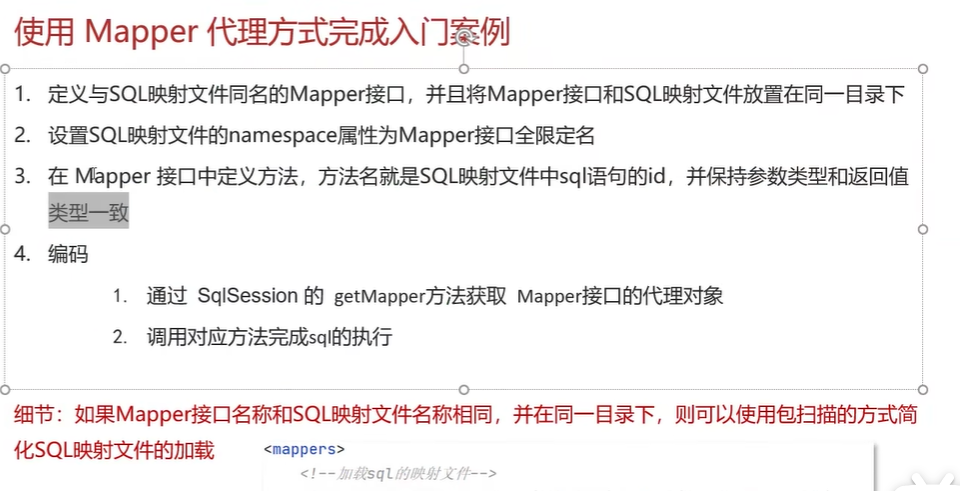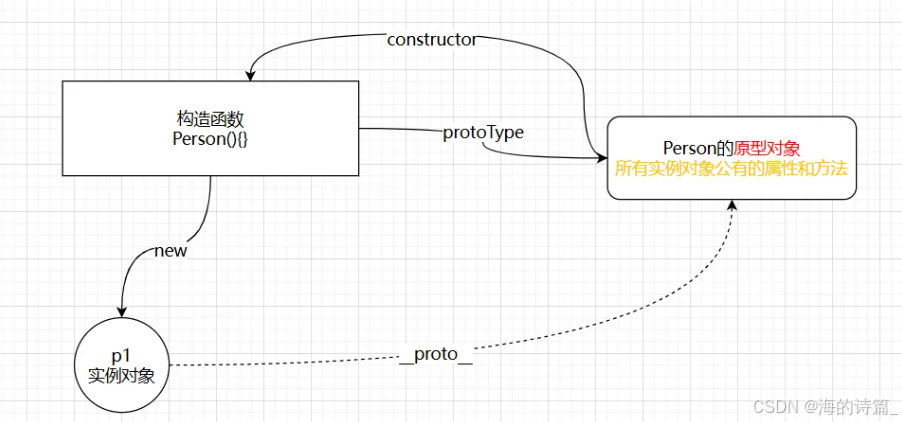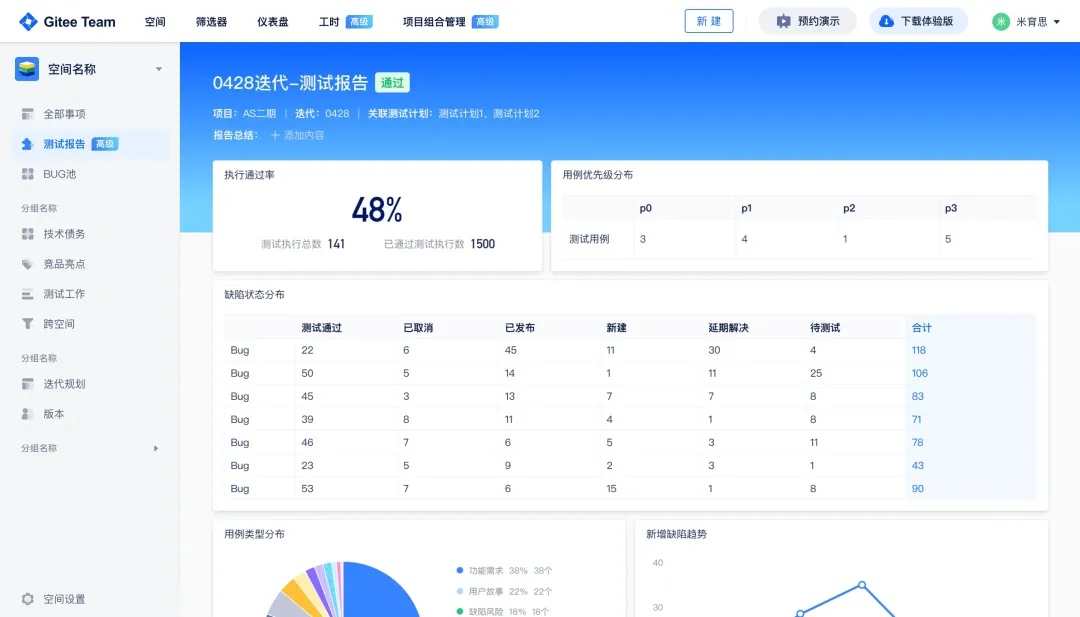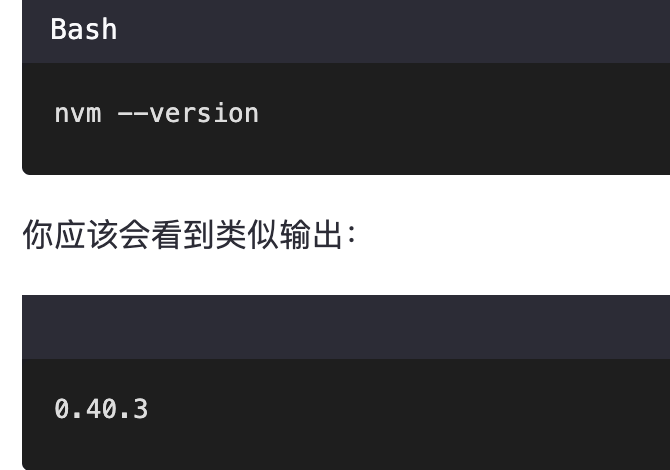FFmpeg之AVFilter
文章目录
- 一、概述
- 二、重要结构体
- 2.1、AVFilterGraph
- 2.2、AVFilter
- 2.3、AVFilterContext
- 三、流程梳理
- 3.1、FFmpeg AVFilter 使用整体流程
- 3.2、过滤器构建流程
- 3.2.1、分配AVFilterGraph
- 3.2.2、创建过滤器源
- 3.2.3、创建接收过滤器
- 3.2.4、生成源和接收过滤器的输入输出
- 3.2.5、通过解析过滤器字符串添加过滤器
- 3.2.6、检查过滤器的完整性
- 3.3、数据加工
- 3.3.1、向源过滤器加入AVFrame
- 3.3.2、从buffersink接收处理后的AVFrame
- 3.4、资源释放
- 四、实例
团队博客: 汽车电子社区
filter,可以翻译为过滤器,滤镜。在FFmpeg中有多种多样的滤镜,你可以把他们当成一个个小工具,专门用于处理视频和音频数据,以便实现一定的目的。如overlay这个滤镜,可以将一个图画覆盖到另一个图画上transport这个滤镜可以将图画做旋转等等。
一、概述
FFMPEG 除了具有强大的封装/解封装,编/解码功能之外,还包含了一个非常强大的组件,滤镜avfilter。 avfilter 组件常用于多媒体处理与编辑,ffmpeg 包含多种滤镜,比如旋转,加水印,多宫格等等。
一个filter的输出可以作为另一个filter的输入,因此多个filter可以组织成为一个网状的filter graph,从而实现更加复杂或者综合的任务。
关于 filter 的概念和用法可以去查找 FFmpeg 的其他资料,这里不再赘述。
libavfilter 库实现了 filter 相关的功能,使得我们可以利用 FFmpeg 提供的诸多 filter 来实现自己所需的功能。具体的使用方法见官方示例:filter_audio.c,filtering_audio.c,filtering_video.c。

二、重要结构体
在使用FFmpeg开发时,使用AVFilter的流程较为复杂,涉及到的数据结构和函数也比较多,那么使用FFmpeg AVFilter的整体流程是什么样,在其执行过程中都有哪些步骤,需要注意哪些细节?这些都是需要我们整理和总结的。
首先,我们需要引入三个概念结构体:AVFilterGraph 、AVFilterContext、AVFilter。
2.1、AVFilterGraph
AVFilterGraph表示一个filter graph,当然它也包含了filter chain的概念,对filters系统的整体管理。
graph 包含了诸多 filter context实例,并负责它们之间的link,graph会负责创建、保存、释放 这些相关的 filter context和link,一般不需要用户进行管理。除此之外,它还有线程特性和最大线程数量的字段和filter context类似。
graph的操作有:分配一个graph,往graph中添加一个filter context,添加一个 filter graph,对 filter 进行 link 操作,检查内部的link和format是否有效,释放graph等。
typedef struct AVFilterGraph {const AVClass *av_class;AVFilterContext **filters;unsigned nb_filters;char *scale_sws_opts; ///< sws options to use for the auto-inserted scale filters/*** Type of multithreading allowed for filters in this graph. A combination* of AVFILTER_THREAD_* flags.** May be set by the caller at any point, the setting will apply to all* filters initialized after that. The default is allowing everything.** When a filter in this graph is initialized, this field is combined using* bit AND with AVFilterContext.thread_type to get the final mask used for* determining allowed threading types. I.e. a threading type needs to be* set in both to be allowed.*/int thread_type;/*** Maximum number of threads used by filters in this graph. May be set by* the caller before adding any filters to the filtergraph. Zero (the* default) means that the number of threads is determined automatically.*/int nb_threads;/*** Opaque object for libavfilter internal use.*/AVFilterGraphInternal *internal;/*** Opaque user data. May be set by the caller to an arbitrary value, e.g. to* be used from callbacks like @ref AVFilterGraph.execute.* Libavfilter will not touch this field in any way.*/void *opaque;/*** This callback may be set by the caller immediately after allocating the* graph and before adding any filters to it, to provide a custom* multithreading implementation.** If set, filters with slice threading capability will call this callback* to execute multiple jobs in parallel.** If this field is left unset, libavfilter will use its internal* implementation, which may or may not be multithreaded depending on the* platform and build options.*/avfilter_execute_func *execute;char *aresample_swr_opts; ///< swr options to use for the auto-inserted aresample filters, Access ONLY through AVOptions/*** Private fields** The following fields are for internal use only.* Their type, offset, number and semantic can change without notice.*/AVFilterLink **sink_links;int sink_links_count;unsigned disable_auto_convert;
} AVFilterGraph;
我们简单点看,我们在调用的时候我们真正能触及到的一般主要是const AVClass av_class;AVFilterContext ** filters; 这两个对象
av_class在初始化AVFilterGraph 的时候就已经一起初始化了,它就是存储滤镜一些相关配置的,在初始化时就已经有一些默认的配置被赋值。
filters需要后续滤镜生成后再进行赋值绑定的,它是滤镜上下文指针类型的指针。
2.2、AVFilter
滤镜结构体,是用来存储具体滤镜信息和一些函数指针,函数指针能让我们外部的进行重写逻辑,作为回调等等。但对于我们实现基本滤镜来说我们根本不需要了解,我们只要关注一些基本信息,例如滤镜名字,滤镜参数等。
typedef struct AVFilter {/*** Filter name. Must be non-NULL and unique among filters.*/const char *name;/*** A description of the filter. May be NULL.** You should use the NULL_IF_CONFIG_SMALL() macro to define it.*/const char *description;/*** List of static inputs.** NULL if there are no (static) inputs. Instances of filters with* AVFILTER_FLAG_DYNAMIC_INPUTS set may have more inputs than present in* this list.*/const AVFilterPad *inputs;/*** List of static outputs.** NULL if there are no (static) outputs. Instances of filters with* AVFILTER_FLAG_DYNAMIC_OUTPUTS set may have more outputs than present in* this list.*/const AVFilterPad *outputs;/*** A class for the private data, used to declare filter private AVOptions.* This field is NULL for filters that do not declare any options.** If this field is non-NULL, the first member of the filter private data* must be a pointer to AVClass, which will be set by libavfilter generic* code to this class.*/const AVClass *priv_class;/*** A combination of AVFILTER_FLAG_**/int flags;/****************************************************************** All fields below this line are not part of the public API. They* may not be used outside of libavfilter and can be changed and* removed at will.* New public fields should be added right above.******************************************************************//*** The number of entries in the list of inputs.*/uint8_t nb_inputs;/*** The number of entries in the list of outputs.*/uint8_t nb_outputs;/*** This field determines the state of the formats union.* It is an enum FilterFormatsState value.*/uint8_t formats_state;/*** Filter pre-initialization function** This callback will be called immediately after the filter context is* allocated, to allow allocating and initing sub-objects.** If this callback is not NULL, the uninit callback will be called on* allocation failure.** @return 0 on success,* AVERROR code on failure (but the code will be* dropped and treated as ENOMEM by the calling code)*/int (*preinit)(AVFilterContext *ctx);/*** Filter initialization function.** This callback will be called only once during the filter lifetime, after* all the options have been set, but before links between filters are* established and format negotiation is done.** Basic filter initialization should be done here. Filters with dynamic* inputs and/or outputs should create those inputs/outputs here based on* provided options. No more changes to this filter's inputs/outputs can be* done after this callback.** This callback must not assume that the filter links exist or frame* parameters are known.** @ref AVFilter.uninit "uninit" is guaranteed to be called even if* initialization fails, so this callback does not have to clean up on* failure.** @return 0 on success, a negative AVERROR on failure*/int (*init)(AVFilterContext *ctx);/*** Filter uninitialization function.** Called only once right before the filter is freed. Should deallocate any* memory held by the filter, release any buffer references, etc. It does* not need to deallocate the AVFilterContext.priv memory itself.** This callback may be called even if @ref AVFilter.init "init" was not* called or failed, so it must be prepared to handle such a situation.*/void (*uninit)(AVFilterContext *ctx);/*** The state of the following union is determined by formats_state.* See the documentation of enum FilterFormatsState in internal.h.*/union {/*** Query formats supported by the filter on its inputs and outputs.** This callback is called after the filter is initialized (so the inputs* and outputs are fixed), shortly before the format negotiation. This* callback may be called more than once.** This callback must set ::AVFilterLink's* @ref AVFilterFormatsConfig.formats "outcfg.formats"* on every input link and* @ref AVFilterFormatsConfig.formats "incfg.formats"* on every output link to a list of pixel/sample formats that the filter* supports on that link.* For audio links, this filter must also set* @ref AVFilterFormatsConfig.samplerates "incfg.samplerates"* /* @ref AVFilterFormatsConfig.samplerates "outcfg.samplerates"* and @ref AVFilterFormatsConfig.channel_layouts "incfg.channel_layouts"* /* @ref AVFilterFormatsConfig.channel_layouts "outcfg.channel_layouts"* analogously.** This callback must never be NULL if the union is in this state.** @return zero on success, a negative value corresponding to an* AVERROR code otherwise*/int (*query_func)(AVFilterContext *);/*** A pointer to an array of admissible pixel formats delimited* by AV_PIX_FMT_NONE. The generic code will use this list* to indicate that this filter supports each of these pixel formats,* provided that all inputs and outputs use the same pixel format.** This list must never be NULL if the union is in this state.* The type of all inputs and outputs of filters using this must* be AVMEDIA_TYPE_VIDEO.*/const enum AVPixelFormat *pixels_list;/*** Analogous to pixels, but delimited by AV_SAMPLE_FMT_NONE* and restricted to filters that only have AVMEDIA_TYPE_AUDIO* inputs and outputs.** In addition to that the generic code will mark all inputs* and all outputs as supporting all sample rates and every* channel count and channel layout, as long as all inputs* and outputs use the same sample rate and channel count/layout.*/const enum AVSampleFormat *samples_list;/*** Equivalent to { pix_fmt, AV_PIX_FMT_NONE } as pixels_list.*/enum AVPixelFormat pix_fmt;/*** Equivalent to { sample_fmt, AV_SAMPLE_FMT_NONE } as samples_list.*/enum AVSampleFormat sample_fmt;} formats;int priv_size; ///< size of private data to allocate for the filterint flags_internal; ///< Additional flags for avfilter internal use only./*** Make the filter instance process a command.** @param cmd the command to process, for handling simplicity all commands must be alphanumeric only* @param arg the argument for the command* @param res a buffer with size res_size where the filter(s) can return a response. This must not change when the command is not supported.* @param flags if AVFILTER_CMD_FLAG_FAST is set and the command would be* time consuming then a filter should treat it like an unsupported command** @returns >=0 on success otherwise an error code.* AVERROR(ENOSYS) on unsupported commands*/int (*process_command)(AVFilterContext *, const char *cmd, const char *arg, char *res, int res_len, int flags);/*** Filter activation function.** Called when any processing is needed from the filter, instead of any* filter_frame and request_frame on pads.** The function must examine inlinks and outlinks and perform a single* step of processing. If there is nothing to do, the function must do* nothing and not return an error. If more steps are or may be* possible, it must use ff_filter_set_ready() to schedule another* activation.*/int (*activate)(AVFilterContext *ctx);
} AVFilter;
AVFilter表示一个被注册的filter类型,如果仅是为了使用它,我们只需知道它的部分特性就可以了。
1、AVFilter.name 和 AVFilter.description:filter 的名称和描述。
2. AVFilter.inputs 和 AVFilter.outputs:AVFilterPad 的数组,描述了filter的输入和输出。
3. AVFilter.flags:filter的特性。
首先,针对 filter 的输入和输出数组,有以下三个帮助函数:
/*** 获取 AVFilterPad 数组的数量,该数组以NULL结尾,一般传入AVFilter.inputs和AVFilter.outputs*/
unsigned avfilter_filter_pad_count(const AVFilter *filter, int is_output)
{return is_output ? filter->nb_outputs : filter->nb_inputs;
}/*** Get the name of an AVFilterPad.** @param pads an array of AVFilterPads* @param pad_idx index of the pad in the array; it is the caller's* responsibility to ensure the index is valid** @return name of the pad_idx'th pad in pads*/
const char *avfilter_pad_get_name(const AVFilterPad *pads, int pad_idx)
{return pads[pad_idx].name;
}/*** Get the type of an AVFilterPad.** @param pads an array of AVFilterPads* @param pad_idx index of the pad in the array; it is the caller's* responsibility to ensure the index is valid** @return type of the pad_idx'th pad in pads*/
// 获取数组中指向下标的 pad 所需的数据类型,调用者应确保传入的下标有效
enum AVMediaType avfilter_pad_get_type(const AVFilterPad *pads, int pad_idx);
然后,就是 AVFilter 的 flag,其可取值如下:
/*** The number of the filter inputs is not determined just by AVFilter.inputs.* The filter might add additional inputs during initialization depending on the* options supplied to it.*/
#define AVFILTER_FLAG_DYNAMIC_INPUTS (1 << 0)
/*** The number of the filter outputs is not determined just by AVFilter.outputs.* The filter might add additional outputs during initialization depending on* the options supplied to it.*/
#define AVFILTER_FLAG_DYNAMIC_OUTPUTS (1 << 1)
/*** The filter supports multithreading by splitting frames into multiple parts* and processing them concurrently.*/
#define AVFILTER_FLAG_SLICE_THREADS (1 << 2)
/*** The filter is a "metadata" filter - it does not modify the frame data in any* way. It may only affect the metadata (i.e. those fields copied by* av_frame_copy_props()).** More precisely, this means:* - video: the data of any frame output by the filter must be exactly equal to* some frame that is received on one of its inputs. Furthermore, all frames* produced on a given output must correspond to frames received on the same* input and their order must be unchanged. Note that the filter may still* drop or duplicate the frames.* - audio: the data produced by the filter on any of its outputs (viewed e.g.* as an array of interleaved samples) must be exactly equal to the data* received by the filter on one of its inputs.*/
#define AVFILTER_FLAG_METADATA_ONLY (1 << 3)/*** The filter can create hardware frames using AVFilterContext.hw_device_ctx.*/
#define AVFILTER_FLAG_HWDEVICE (1 << 4)
/*** Some filters support a generic "enable" expression option that can be used* to enable or disable a filter in the timeline. Filters supporting this* option have this flag set. When the enable expression is false, the default* no-op filter_frame() function is called in place of the filter_frame()* callback defined on each input pad, thus the frame is passed unchanged to* the next filters.*/
#define AVFILTER_FLAG_SUPPORT_TIMELINE_GENERIC (1 << 16)
/*** Same as AVFILTER_FLAG_SUPPORT_TIMELINE_GENERIC, except that the filter will* have its filter_frame() callback(s) called as usual even when the enable* expression is false. The filter will disable filtering within the* filter_frame() callback(s) itself, for example executing code depending on* the AVFilterContext->is_disabled value.*/
#define AVFILTER_FLAG_SUPPORT_TIMELINE_INTERNAL (1 << 17)
/*** Handy mask to test whether the filter supports or no the timeline feature* (internally or generically).*/
#define AVFILTER_FLAG_SUPPORT_TIMELINE (AVFILTER_FLAG_SUPPORT_TIMELINE_GENERIC | AVFILTER_FLAG_SUPPORT_TIMELINE_INTERNAL)
2.3、AVFilterContext
AVFilterContext表示一个AVFilter的实例,我们在实际使用filter时,就是使用这个类型。
AVFilterContext在被使用前,它必须是ready状态的,也就是被初始化的。说白了,就是需要对filter进行一些选项上的设置,然后通过初始化告诉FFmpeg我们已经做了相关的配置。
/** An instance of a filter */
struct AVFilterContext {const AVClass *av_class; ///< needed for av_log() and filters common optionsconst AVFilter *filter; ///< the AVFilter of which this is an instancechar *name; ///< name of this filter instanceAVFilterPad *input_pads; ///< array of input padsAVFilterLink **inputs; ///< array of pointers to input linksunsigned nb_inputs; ///< number of input padsAVFilterPad *output_pads; ///< array of output padsAVFilterLink **outputs; ///< array of pointers to output linksunsigned nb_outputs; ///< number of output padsvoid *priv; ///< private data for use by the filterstruct AVFilterGraph *graph; ///< filtergraph this filter belongs to/*** Type of multithreading being allowed/used. A combination of* AVFILTER_THREAD_* flags.** May be set by the caller before initializing the filter to forbid some* or all kinds of multithreading for this filter. The default is allowing* everything.** When the filter is initialized, this field is combined using bit AND with* AVFilterGraph.thread_type to get the final mask used for determining* allowed threading types. I.e. a threading type needs to be set in both* to be allowed.** After the filter is initialized, libavfilter sets this field to the* threading type that is actually used (0 for no multithreading).*/int thread_type;/*** An opaque struct for libavfilter internal use.*/AVFilterInternal *internal;struct AVFilterCommand *command_queue;char *enable_str; ///< enable expression stringvoid *enable; ///< parsed expression (AVExpr*)double *var_values; ///< variable values for the enable expressionint is_disabled; ///< the enabled state from the last expression evaluation/*** For filters which will create hardware frames, sets the device the* filter should create them in. All other filters will ignore this field:* in particular, a filter which consumes or processes hardware frames will* instead use the hw_frames_ctx field in AVFilterLink to carry the* hardware context information.** May be set by the caller on filters flagged with AVFILTER_FLAG_HWDEVICE* before initializing the filter with avfilter_init_str() or* avfilter_init_dict().*/AVBufferRef *hw_device_ctx;/*** Max number of threads allowed in this filter instance.* If <= 0, its value is ignored.* Overrides global number of threads set per filter graph.*/int nb_threads;/*** Ready status of the filter.* A non-0 value means that the filter needs activating;* a higher value suggests a more urgent activation.*/unsigned ready;/*** Sets the number of extra hardware frames which the filter will* allocate on its output links for use in following filters or by* the caller.** Some hardware filters require all frames that they will use for* output to be defined in advance before filtering starts. For such* filters, any hardware frame pools used for output must therefore be* of fixed size. The extra frames set here are on top of any number* that the filter needs internally in order to operate normally.** This field must be set before the graph containing this filter is* configured.*/int extra_hw_frames;
};
AVFilterContext 表示 AVFilter 的一个实例。其重要字段如下:
1. AVFilterContext .filter:这个 filter context 是那种 filter 的实例。
2. AVFilterContext .name:这个 filter context 的名称。
3. AVFilterContext.graph:这个 filter context 属于哪个 graph。
4. AVFilterContext .input_pads,AVFilterContext.inputs ,AVFilterContext.nb_inputs:分别描述了input pads数组,input links数组,以及input 数量。
5. AVFilterContext .output_pads,AVFilterContext.outputs ,AVFilterContext.nb_outputs:分别描述了output pads数组,output links数组,以及 output 数量。
6. AVFilterContext.thread_type,AVFilterContext.nb_threads:线程特性和可开启的最大线程数量。
7. AVFilterContext.is_disabled:filter 关于 timeline 特征的开启标志。
8. AVFilterContext.ready:表示 filter 是否被初始化,非 0 值表示 filter 需要被初始化,且值越大表示越急切。
filter context初始化的方法有三种:avfilter_init_str()和avfilter_init_dict(),以及通过AVOption API直接操作filter context。
注意初始化的 avfilter_init_str() 和 avfilter_init_dict() 在行为上的差别:当传入的 options 中有不被 filter 所支持的参数时,这两个函数的行为是不同,avfilter_init_str() 调用会失败,而 avfilter_init_dict() 函数则不会失败,它会将不能应用于指定 filter 的 option 通过参数返回,然后继续执行任务。
/** 使用提供的参数初始化 filter。** 参数args:表示用于初始化 filter 的 options。该字符串必须使用 ":" 来分割各个键值对,* 而键值对的形式为 'key=value'。如果不需要设置选项,args为空。** 除了这种方式设置选项之外,还可以利用 AVOptions API 直接对 filter 设置选项。** 返回值:成功返回0,失败返回一个负的错误值
*/
int avfilter_init_str(AVFilterContext *ctx, const char *args);/** 使用提供的参数初始化filter。** 参数 options:以 dict 形式提供的 options。** 返回值:成功返回0,失败返回一个负的错误值* * 注意:这个函数和 avfilter_init_str 函数的功能是一样的,只不过传递的参数形式不同。* 但是当传入的 options 中有不被 filter 所支持的参数时,这两个函数的行为是不同:* avfilter_init_str 调用会失败,而这个函数则不会失败,它会将不能应用于指定 filter 的 option 通过参数 options 返回,然后继续执行任务。
*/
int avfilter_init_dict(AVFilterContext *ctx, AVDictionary **options);/** 释放 filter context。
*/
void avfilter_free(AVFilterContext *filter);
三、流程梳理
3.1、FFmpeg AVFilter 使用整体流程
下图就是FFmpeg AVFilter在使用过程中的流程图:
![[图片]](https://img-blog.csdnimg.cn/direct/09010b6cdf6c44849789068ee4c3c8f6.png)
我们对上图先做下说明,理解下图中每个步骤的关系,然后,才从代码的角度来给出其使用的步骤。
1. 最顶端的AVFilterGraph,这个结构前面介绍过,主要管理加入的过滤器,其中加入的过滤器就是通过函数avfilter_graph_create_filter来创建并加入,这个函数返回是AVFilterContext(其封装了AVFilter的详细参数信息)。
2. buffer和buffersink这两个过滤器是FFMpeg为我们实现好的,buffer表示源,用来向后面的过滤器提供数据输入(其实就是原始的AVFrame);buffersink过滤器是最终输出的(经过过滤器链处理后的数据AVFrame),其它的诸如filter 1 等过滤器是由avfilter_graph_parse_ptr函数解析外部传入的过滤器描述字符串自动生成的,内部也是通过avfilter_graph_create_filter来创建过滤器的。
3. 上面的buffer、filter 1、filter 2、filter n、buffersink之间是通过avfilter_link函数来进行关联的(通过AVFilterLink结构),这样子过滤器和过滤器之间就通过AVFilterLink进行关联上了,前一个过滤器的输出就是下一个过滤器的输入,注意,除了源和接收过滤器之外,其它的过滤器至少有一个输入和输出,这很好理解,中间的过滤器处理完AVFrame后,得到新的处理后的AVFrame数据,然后把新的AVFrame数据作为下一个过滤器的输入。
4. 过滤器建立完成后,首先我们通过av_buffersrc_add_frame把最原始的AVFrame(没有经过任何过滤器处理的)加入到buffer过滤器的fifo队列。
5. 然后调用buffersink过滤器的av_buffersink_get_frame_flags来获取处理完后的数据帧(这个最终放入buffersink过滤器的AVFrame是通过之前创建的一系列过滤器处理后的数据)。
6. 使用流程图就介绍到这里,下面结合上面的使用流程图详细说下FFMpeg中使用过滤器的步骤,这个过程我们分为三个部分:过滤器构建、数据加工、资源释放。
初始的流程大概可以总结为,创建filtergraph, 创建source filter 和sink filter, 将 filter连接起来添加到filtergraph, 配置filtergraph,可参考下图:


3.2、过滤器构建流程
3.2.1、分配AVFilterGraph
AVFilterGraph* graph = avfilter_graph_alloc();
3.2.2、创建过滤器源
char srcArgs[256] = {0};
AVFilterContext *srcFilterCtx;
AVFilter* srcFilter = avfilter_get_by_name("buffer");
avfilter_graph_create_filter(&srcFilterCtx, srcFilter ,"out_buffer", srcArgs, NULL, graph);
3.2.3、创建接收过滤器
AVFilterContext *sinkFilterCtx;
AVFilter* sinkFilter = avfilter_get_by_name("buffersink");
avfilter_graph_create_filter(&sinkFilterCtx, sinkFilter,"in_buffersink", NULL, NULL, graph);
3.2.4、生成源和接收过滤器的输入输出
这里主要是把源和接收过滤器封装给AVFilterInOut结构,使用这个中间结构来把过滤器字符串解析并链接进graph,主要代码如下:
AVFilterInOut *inputs = avfilter_inout_alloc();
AVFilterInOut *outputs = avfilter_inout_alloc();
outputs->name = av_strdup("in");
outputs->filter_ctx = srcFilterCtx;
outputs->pad_idx = 0;
outputs->next = NULL;
inputs->name = av_strdup("out");
inputs->filter_ctx = sinkFilterCtx;
inputs->pad_idx = 0;
inputs->next = NULL;
这里源对应的AVFilterInOut的name最好定义为in,接收对应的name为out,因为FFMpeg源码里默认会通过这样个name来对默认的输出和输入进行查找。
3.2.5、通过解析过滤器字符串添加过滤器
const *char filtergraph = "[in1]过滤器名称=参数1:参数2[out1]";
int ret = avfilter_graph_parse_ptr(graph, filtergraph, &inputs, &outputs, NULL);
3.2.6、检查过滤器的完整性
avfilter_graph_config(graph, NULL);
3.3、数据加工
3.3.1、向源过滤器加入AVFrame
AVFrame* frame; // 这是解码后获取的数据帧
int ret = av_buffersrc_add_frame(srcFilterCtx, frame);
3.3.2、从buffersink接收处理后的AVFrame
int ret = av_buffersink_get_frame_flags(sinkFilterCtx, frame, 0);
现在我们就可以使用处理后的AVFrame,比如显示或播放出来。
3.4、资源释放
使用结束后,调用avfilter_graph_free(&graph);释放掉AVFilterGraph类型的graph。
四、实例
extern "C" {#include <libavcodec/avcodec.h>#include <libavformat/avformat.h>#include <libavfilter/avfiltergraph.h>#include <libavfilter/buffersink.h>#include <libavfilter/buffersrc.h>#include <libavutil/opt.h>#include <libavutil/imgutils.h>
}int main(int argc, char* argv)
{int ret = 0;// input yuvFILE* inFile = NULL;const char* inFileName = "sintel_480x272_yuv420p.yuv";fopen_s(&inFile, inFileName, "rb+");if (!inFile) {printf("Fail to open file\n");return -1;}int in_width = 480;int in_height = 272;// output yuvFILE* outFile = NULL;const char* outFileName = "out_crop_vfilter.yuv";fopen_s(&outFile, outFileName, "wb");if (!outFile) {printf("Fail to create file for output\n");return -1;}avfilter_register_all();AVFilterGraph* filter_graph = avfilter_graph_alloc();if (!filter_graph) {printf("Fail to create filter graph!\n");return -1;}// source filterchar args[512];_snprintf_s(args, sizeof(args),"video_size=%dx%d:pix_fmt=%d:time_base=%d/%d:pixel_aspect=%d/%d",in_width, in_height, AV_PIX_FMT_YUV420P,1, 25, 1, 1);AVFilter* bufferSrc = avfilter_get_by_name("buffer");AVFilterContext* bufferSrc_ctx;ret = avfilter_graph_create_filter(&bufferSrc_ctx, bufferSrc, "in", args, NULL, filter_graph);if (ret < 0) {printf("Fail to create filter bufferSrc\n");return -1;}// sink filterAVBufferSinkParams *bufferSink_params;AVFilterContext* bufferSink_ctx;AVFilter* bufferSink = avfilter_get_by_name("buffersink");enum AVPixelFormat pix_fmts[] = { AV_PIX_FMT_YUV420P, AV_PIX_FMT_NONE };bufferSink_params = av_buffersink_params_alloc();bufferSink_params->pixel_fmts = pix_fmts;ret = avfilter_graph_create_filter(&bufferSink_ctx, bufferSink, "out", NULL, bufferSink_params, filter_graph);if (ret < 0) {printf("Fail to create filter sink filter\n");return -1;}// split filterAVFilter *splitFilter = avfilter_get_by_name("split");AVFilterContext *splitFilter_ctx;ret = avfilter_graph_create_filter(&splitFilter_ctx, splitFilter, "split", "outputs=2", NULL, filter_graph);if (ret < 0) {printf("Fail to create split filter\n");return -1;}// crop filterAVFilter *cropFilter = avfilter_get_by_name("crop");AVFilterContext *cropFilter_ctx;ret = avfilter_graph_create_filter(&cropFilter_ctx, cropFilter, "crop", "out_w=iw:out_h=ih/2:x=0:y=0", NULL, filter_graph);if (ret < 0) {printf("Fail to create crop filter\n");return -1;}// vflip filterAVFilter *vflipFilter = avfilter_get_by_name("vflip");AVFilterContext *vflipFilter_ctx;ret = avfilter_graph_create_filter(&vflipFilter_ctx, vflipFilter, "vflip", NULL, NULL, filter_graph);if (ret < 0) {printf("Fail to create vflip filter\n");return -1;}// overlay filterAVFilter *overlayFilter = avfilter_get_by_name("overlay");AVFilterContext *overlayFilter_ctx;ret = avfilter_graph_create_filter(&overlayFilter_ctx, overlayFilter, "overlay", "y=0:H/2", NULL, filter_graph);if (ret < 0) {printf("Fail to create overlay filter\n");return -1;}// src filter to split filterret = avfilter_link(bufferSrc_ctx, 0, splitFilter_ctx, 0);if (ret != 0) {printf("Fail to link src filter and split filter\n");return -1;}// split filter's first pad to overlay filter's main padret = avfilter_link(splitFilter_ctx, 0, overlayFilter_ctx, 0);if (ret != 0) {printf("Fail to link split filter and overlay filter main pad\n");return -1;}// split filter's second pad to crop filterret = avfilter_link(splitFilter_ctx, 1, cropFilter_ctx, 0);if (ret != 0) {printf("Fail to link split filter's second pad and crop filter\n");return -1;}// crop filter to vflip filterret = avfilter_link(cropFilter_ctx, 0, vflipFilter_ctx, 0);if (ret != 0) {printf("Fail to link crop filter and vflip filter\n");return -1;}// vflip filter to overlay filter's second padret = avfilter_link(vflipFilter_ctx, 0, overlayFilter_ctx, 1);if (ret != 0) {printf("Fail to link vflip filter and overlay filter's second pad\n");return -1;}// overlay filter to sink filterret = avfilter_link(overlayFilter_ctx, 0, bufferSink_ctx, 0);if (ret != 0) {printf("Fail to link overlay filter and sink filter\n");return -1;}// check filter graphret = avfilter_graph_config(filter_graph, NULL);if (ret < 0) {printf("Fail in filter graph\n");return -1;}char *graph_str = avfilter_graph_dump(filter_graph, NULL);FILE* graphFile = NULL;fopen_s(&graphFile, "graphFile.txt", "w");fprintf(graphFile, "%s", graph_str);av_free(graph_str);AVFrame *frame_in = av_frame_alloc();unsigned char *frame_buffer_in = (unsigned char *)av_malloc(av_image_get_buffer_size(AV_PIX_FMT_YUV420P, in_width, in_height, 1));av_image_fill_arrays(frame_in->data, frame_in->linesize, frame_buffer_in,AV_PIX_FMT_YUV420P, in_width, in_height, 1);AVFrame *frame_out = av_frame_alloc();unsigned char *frame_buffer_out = (unsigned char *)av_malloc(av_image_get_buffer_size(AV_PIX_FMT_YUV420P, in_width, in_height, 1));av_image_fill_arrays(frame_out->data, frame_out->linesize, frame_buffer_out,AV_PIX_FMT_YUV420P, in_width, in_height, 1);frame_in->width = in_width;frame_in->height = in_height;frame_in->format = AV_PIX_FMT_YUV420P;while (1) {if (fread(frame_buffer_in, 1, in_width*in_height * 3 / 2, inFile) != in_width*in_height * 3 / 2) {break;}//input Y,U,Vframe_in->data[0] = frame_buffer_in;frame_in->data[1] = frame_buffer_in + in_width*in_height;frame_in->data[2] = frame_buffer_in + in_width*in_height * 5 / 4;if (av_buffersrc_add_frame(bufferSrc_ctx, frame_in) < 0) {printf("Error while add frame.\n");break;}/* pull filtered pictures from the filtergraph */ret = av_buffersink_get_frame(bufferSink_ctx, frame_out);if (ret < 0)break;//output Y,U,Vif (frame_out->format == AV_PIX_FMT_YUV420P) {for (int i = 0; i < frame_out->height; i++) {fwrite(frame_out->data[0] + frame_out->linesize[0] * i, 1, frame_out->width, outFile);}for (int i = 0; i < frame_out->height / 2; i++) {fwrite(frame_out->data[1] + frame_out->linesize[1] * i, 1, frame_out->width / 2, outFile);}for (int i = 0; i < frame_out->height / 2; i++) {fwrite(frame_out->data[2] + frame_out->linesize[2] * i, 1, frame_out->width / 2, outFile);}}printf("Process 1 frame!\n");av_frame_unref(frame_out);}fclose(inFile);fclose(outFile);av_frame_free(&frame_in);av_frame_free(&frame_out);avfilter_graph_free(&filter_graph);return 0;
}
相关文章:

FFmpeg之AVFilter
文章目录 一、概述二、重要结构体2.1、AVFilterGraph2.2、AVFilter2.3、AVFilterContext 三、流程梳理3.1、FFmpeg AVFilter 使用整体流程3.2、过滤器构建流程3.2.1、分配AVFilterGraph3.2.2、创建过滤器源3.2.3、创建接收过滤器3.2.4、生成源和接收过滤器的输入输出3.2.5、通过…...

ES 之索引和文档
本文主要介绍ES中的数据组成结构单元。 一、文档(Document) 1、概念 ES的数据存储单元是面向文档的,文档是所有数据存储,搜索的最小单元。 你可以把ES中的文档对应成mysql中的一条条数据记录。到时候你存进ES的数据就是一个个文档。 文档存入ES是序列…...

使用muduo库编写网络server端
muduo库源码编译安装和环境搭建 C muduo网络库知识分享01 - Linux平台下muduo网络库源码编译安装-CSDN博客 #include<iostream> #include<muduo/net/TcpServer.h> #include<muduo/net/EventLoop.h> using namespace std; using namespace muduo; using name…...

Unity3D和three.js的比较
一、Unity3D和three.js简介 Unity3D是一款跨平台的游戏引擎,可以用于开发2D和3D游戏。它提供了一个可视化的开发环境,包含了强大的编辑器和工具,使开发者可以方便地创建游戏场景、添加物体、设置物理效果、编写脚本等。Unity3D支持多种平台,包括PC、移动设备、主机等,可以…...

JavaScript 类型判断及类型转换规则
文章目录 JavaScript 类型及其判断使用 typeof 判断类型使用 instanceof 判断类型使用 constructor 和 Object.prototype.toString 判断类型JavaScript 类型及其转换JavaScript 函数参数传递cannot read property of undefined 问题解决方案分析一道网红题目JavaScript 类型判断…...

ubuntu禁用/启用图形界面
当安装了带图形界的ubuntu的时候,如果觉得图形界面占资源,就需要将图形界面关闭,关闭的方法如下: 1、 打开 /etc/default/grub,修改或增加如下参数: GRUB_CMDLINE_LINUX_DEFAULT"text" GRUB_TE…...
——代码随想录算法训练营Day09)
【LeetCode】28. 找出字符串中第一个匹配项的下标(简单)——代码随想录算法训练营Day09
题目链接:28. 找出字符串中第一个匹配项的下标 题目描述 给你两个字符串 haystack 和 needle ,请你在 haystack 字符串中找出 needle 字符串的第一个匹配项的下标(下标从 0 开始)。如果 needle 不是 haystack 的一部分ÿ…...

架设一台NFS服务器
1、开放/nfs/shared目录,供所有用户查询资料 2、开放/nfs/upload目录,为192.168.xxx.0/24网段主机可以上传目录, 并将所有用户及所属的组映射为nfs-upload,其UID和GID均为210 3、将/home/tom目录仅共享给192.168.xxx.xxx这台主机…...

MySQL中根据出生日期计算年龄
创建student表 mysql> create table student( -> sid int primary key comment 学生号, -> sname varchar(20) comm…...

ABAP IDOC 2 XML
有个需求,外围系统希望我们给到一个IDOC 记录的样例,但是我们we02中并无法看到 就找了一个demo去直接展示IDOC内容 *&---------------------------------------------------------------------* *& Report Z_IDOC_TO_XML *&------------…...

什么是小程序?特点和技术架构详解
小程序是一种新的移动应用程序格式,一种结合了 Web 技术以及客户端技术的混合解决方案。 传统的原生应用运行起来比较流畅,但是也有天然的基因缺陷: 不支持动态化,发布周期长需要开发Android和iOS两套代码,开发成本高…...

边缘计算的挑战和机遇——数据安全与隐私保护
边缘计算的挑战和机遇 边缘计算面临着数据安全与隐私保护、网络稳定性等挑战,但同时也带来了更强的实时性和本地处理能力,为企业降低了成本和压力,提高了数据处理效率。因此,边缘计算既带来了挑战也带来了机遇,需要我…...
)
linux-等保三级脚本(1)
该脚本主要是针对 CentOS Linux 7 合规基线加固的一些配置操作,包括创建用户、安全审计配置、入侵防范配置、访问控制配置、身份鉴别策略配置等。如果您需要在脚本中添加公司网址,您可以在适当的位置添加相应的内容。不过请注意,在实际生产环…...

K8s面试题——情景篇
文章目录 一、考虑一家拥有分布式系统的跨国公司,拥有大量数据中心,虚拟机和许多从事各种任务的员工。您认为这样公司如何以与 Kubernetes 一致的方式管理所有任务?二、考虑一种情况,即公司希望通过维持最低成本来提高其效率和技术运营速度。…...

.NET 8.0 发布到 IIS
如何在IIS(Internet信息服务)上发布ASP.NET Core 8? 在本文中,我假设您的 Windows Server IIS 上已经有一个应用程序池。 按照步骤了解在 IIS 环境下发布 ASP.NET Core 8 应用程序的技巧。 您需要设置代码以支持 IIS 并将项目配…...

当前vscode环境下 多进程多线程运行情况探究
我的代码 其中在“打开图片时”、“进入子进程之前”、“子进程join前”、“进入子进程区域后”,“子进程join后”、“进入子线程区域后”分别打印了进程线程的编号和数量。 # -*- coding: utf-8 -*-# Form implementation generated from reading ui file test2.…...

使用WAF防御网络上的隐蔽威胁之命令注入攻击
命令注入攻击是网络安全领域的一种严重威胁,它允许攻击者在易受攻击的应用程序上执行恶意命令。 这种攻击通常发生在应用程序将用户输入错误地处理为操作系统命令的情况下。 什么是命令注入攻击 定义:命令注入攻击发生在攻击者能够在易受攻击的应用程…...

blender 导入到 Marvelous Designer
1) 将模型的所有部分合并为一个单独的mesh 2) 先调整计量单位: 3)等比缩放,身高调整到180cm左右 4)应用当前scale 首先,选中你要修改的物体,然后按下Ctrl-A键,打开应用…...

【Redis】AOF 源码
在上篇, 我们已经从使用 / 机制 / AOF 过程中涉及的辅助功能等方面简单了解了 Redis AOF。 这篇将从源码的形式, 进行深入的了解。 1 Redis 整个 AOF 主要功能 Redis 的 AOF 功能概括起来就 2 个功能 AOF 同步: 将客户端发送的变更命令, 保存到 AOF 文件中AOF 重写: 随着 Red…...

【小笔记】算法训练基础超参数调优思路
【学而不思则罔,思维不学则怠】 本文总结一下常见的一些算法训练超参数调优思路(陆续总结更新),包括: batchsize学习率epochsdropout(待添加) Batch_size 2023.9.29 简单来说,较…...

K8S认证|CKS题库+答案| 11. AppArmor
目录 11. AppArmor 免费获取并激活 CKA_v1.31_模拟系统 题目 开始操作: 1)、切换集群 2)、切换节点 3)、切换到 apparmor 的目录 4)、执行 apparmor 策略模块 5)、修改 pod 文件 6)、…...

黑马Mybatis
Mybatis 表现层:页面展示 业务层:逻辑处理 持久层:持久数据化保存 在这里插入图片描述 Mybatis快速入门 
视频字幕质量评估的大规模细粒度基准
大家读完觉得有帮助记得关注和点赞!!! 摘要 视频字幕在文本到视频生成任务中起着至关重要的作用,因为它们的质量直接影响所生成视频的语义连贯性和视觉保真度。尽管大型视觉-语言模型(VLMs)在字幕生成方面…...

Spring Boot+Neo4j知识图谱实战:3步搭建智能关系网络!
一、引言 在数据驱动的背景下,知识图谱凭借其高效的信息组织能力,正逐步成为各行业应用的关键技术。本文聚焦 Spring Boot与Neo4j图数据库的技术结合,探讨知识图谱开发的实现细节,帮助读者掌握该技术栈在实际项目中的落地方法。 …...

前端开发面试题总结-JavaScript篇(一)
文章目录 JavaScript高频问答一、作用域与闭包1.什么是闭包(Closure)?闭包有什么应用场景和潜在问题?2.解释 JavaScript 的作用域链(Scope Chain) 二、原型与继承3.原型链是什么?如何实现继承&a…...

Spring AI与Spring Modulith核心技术解析
Spring AI核心架构解析 Spring AI(https://spring.io/projects/spring-ai)作为Spring生态中的AI集成框架,其核心设计理念是通过模块化架构降低AI应用的开发复杂度。与Python生态中的LangChain/LlamaIndex等工具类似,但特别为多语…...

Spring Cloud Gateway 中自定义验证码接口返回 404 的排查与解决
Spring Cloud Gateway 中自定义验证码接口返回 404 的排查与解决 问题背景 在一个基于 Spring Cloud Gateway WebFlux 构建的微服务项目中,新增了一个本地验证码接口 /code,使用函数式路由(RouterFunction)和 Hutool 的 Circle…...

关键领域软件测试的突围之路:如何破解安全与效率的平衡难题
在数字化浪潮席卷全球的今天,软件系统已成为国家关键领域的核心战斗力。不同于普通商业软件,这些承载着国家安全使命的软件系统面临着前所未有的质量挑战——如何在确保绝对安全的前提下,实现高效测试与快速迭代?这一命题正考验着…...

mac 安装homebrew (nvm 及git)
mac 安装nvm 及git 万恶之源 mac 安装这些东西离不开Xcode。及homebrew 一、先说安装git步骤 通用: 方法一:使用 Homebrew 安装 Git(推荐) 步骤如下:打开终端(Terminal.app) 1.安装 Homebrew…...

多模态图像修复系统:基于深度学习的图片修复实现
多模态图像修复系统:基于深度学习的图片修复实现 1. 系统概述 本系统使用多模态大模型(Stable Diffusion Inpainting)实现图像修复功能,结合文本描述和图片输入,对指定区域进行内容修复。系统包含完整的数据处理、模型训练、推理部署流程。 import torch import numpy …...
